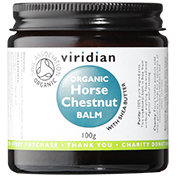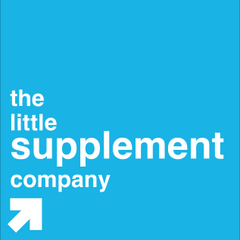
Viridian Organic Horse Chestnut Balm 100g
What is Organic Horse Chestnut Balm
Organic Horse Chestnut balm is a naturally stimulating salve formulated with skin nourishing oils and plant extracts to decrease the sensation of heavy legs. Horse chestnut has been shown to help maintain proper circulation and support healthy veins and capillaries.
All of the Viridian balms are produced and packaged on an organic farm in England. The plants are all grown from hand-sown seeds in spring, and then hand-picked at the end of summer as part of a slow and delicate process that preserves the integrity of each plant. After gently drying the flowers and herbs, they are carefully steeped in oil to lock in the very best herbal benefits. Small batches are then blended with other therapeutic ingredients to create luxurious balms. Hand crafted with time and care, every balm follows the pace of nature.
Our range of balms have all been certified organic by the Soil Association - better for the planet, better for you.
Recommended use of Horse Chestnut Balm
External use only, apply to affected part of the skin as required. Do not use internally. Avoid applying topically to broken or ulcerated skin.
Directions: Apply to skin as required. For external use only.
| Ingredient | Weight | %EC NRV |
|---|---|---|
| Helianthus annuus seed oil | ||
| Cera flava | ||
| Butyrospermum parkii | ||
| Aesculus hippocastanum seed extract | ||
| Arctium lappa root extract | ||
| Calendula officinalis flower ext | ||
| Rosmarinus extract | ||
| Lavandula angustifolia oil | ||
| Limonene & Linalool | ||
| Common names of ingredients listed above: organic sunflower oil, organic beeswax, organic shea butter, organic horse chestnut seed extract, organic burdock root extract, organic calendula(marigold)flower extract, organic rosemary extract, organic lavender |
